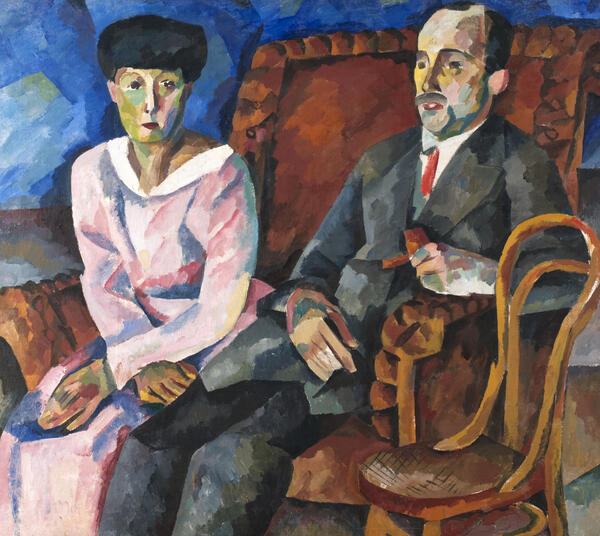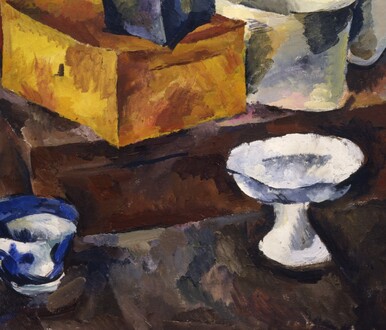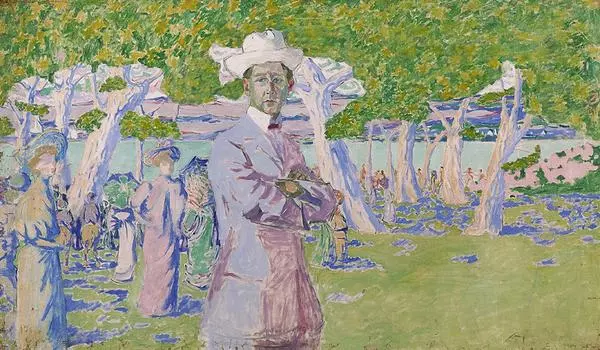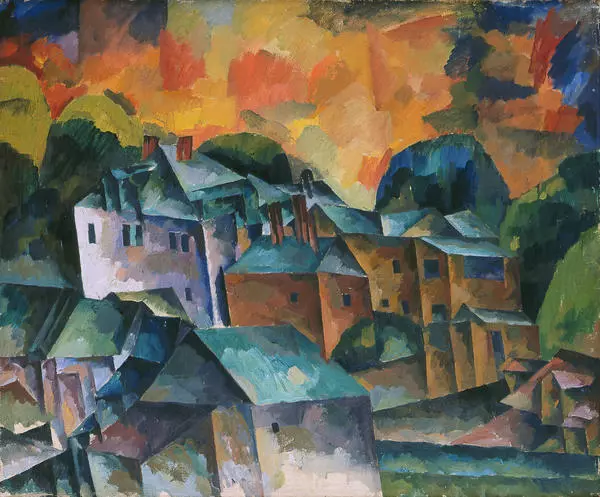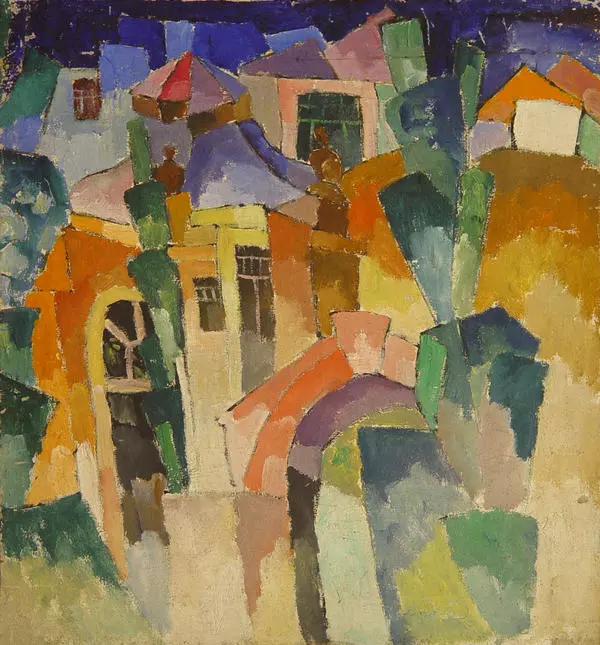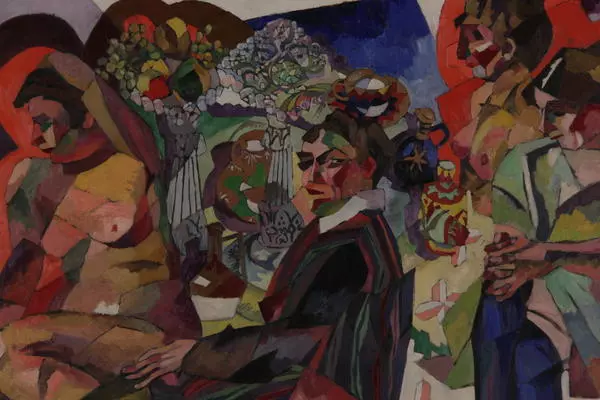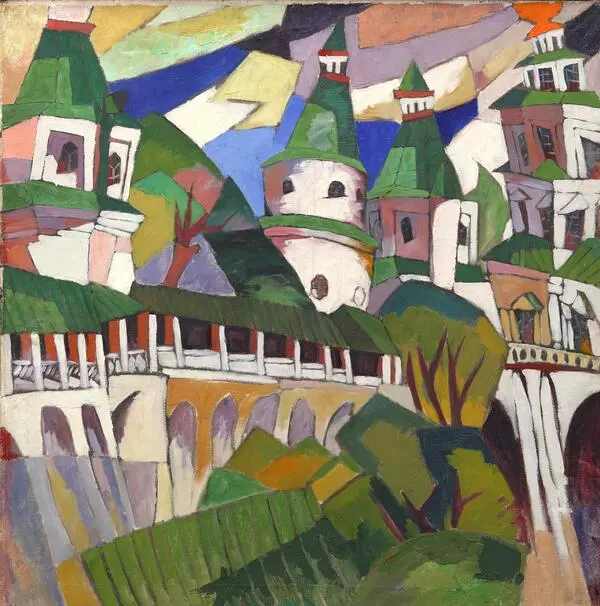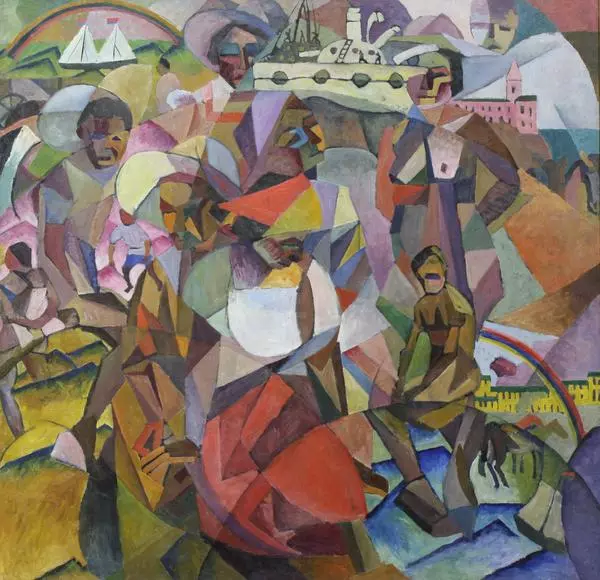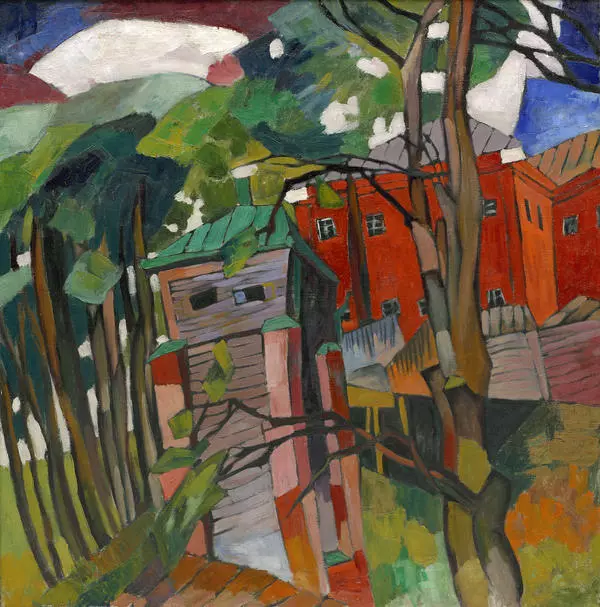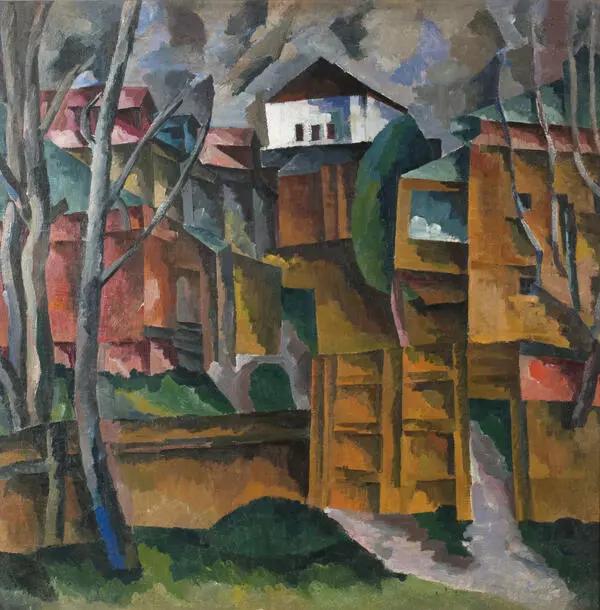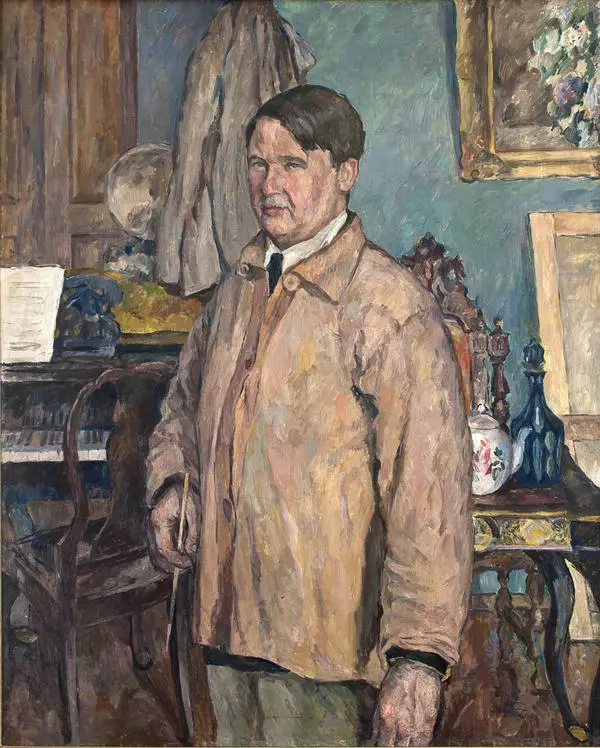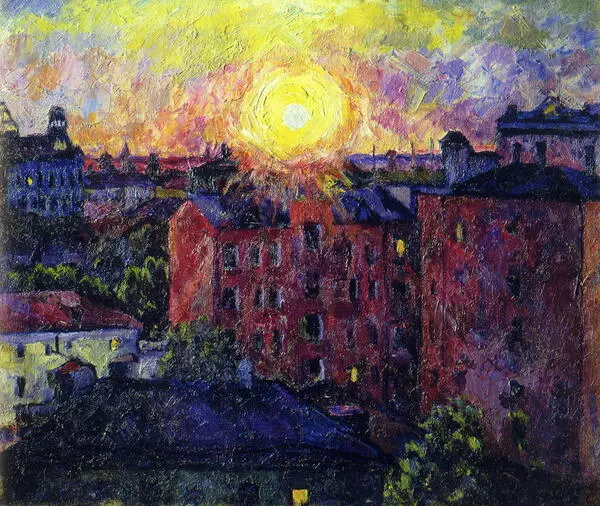Among the Russian avant-garde artwork in the collection of the Radishchev Museum, the works done by Aristarkh Vasilyevich Lentulov (1882-1943) really stand out. The artist’s works master incorporated the central trends in European artistic movements at the beginning of the last century. Lentulov’s portraits and landscapes draw attention not only due to their intricately developed color palettes — they are set apart by a kind of angular
plasticity, inner dynamism, and ornamental decorativeness. In his artwork, cubism, expressionism, and futurism are all combined in a rather fanciful way. All these details create the artist’s characteristic, unique style, who was one of the originators of the famous “Jack of Diamonds” group (1910-1917), which included Petr Konchalovskiy, Ilya Mashkov, and Robert Falk.
At the cusp of the 1920s, Lentulov briefly turned to assimilating the system created by the great French artist, Paul Cezanne. Lentulov spoke about this: “Contemporary French art, however, did not as strong an impact on me as it did on all the Moscow artists. In this sense, I stand somewhat aloof, but Cezanne represents the beginning of all possibilities, insofar as I am his student”. The works from this period include A Family Portrait.
N.M. Schekotov and His Wife, which is very typical for the artist’s style at that time.
A man in a gray suit and red tie, and a woman in a pink dress, sit on a brown, high-backed sofa. He is leaning back nonchalantly, while her pose is somewhat tense, leaning forward slightly, with her arms crossed on her knees. The provisional dark blue background contrasts with the sofa and the woman’s dress, but is concordant with the man’s suit, and also echoes the overtones on the people’s faces, hands, and clothes.
The dark gray color of the man’s suit, and the ocher brown of the Viennese chair next to the sofa, ensure the predominance of restrained, muffled tones in the picture. The hands and faces of the people depicted are roughly shaped by yellow-green, blue, and red overtones. Both figures, especially the male one, are noticeably exaggerated. But even in this portrait the intentional ‘shaping into cubes’, which sharpens the form, does not lead to gaining a grasp of the figures that are depicted. It cannot be said that this lies outside the scope of the artist’s capabilities completely: he created a number of portraits and self-portraits that are quite convincing in terms of their inner traits. But that is clearly not part of his intention with this work.
At the cusp of the 1920s, Lentulov briefly turned to assimilating the system created by the great French artist, Paul Cezanne. Lentulov spoke about this: “Contemporary French art, however, did not as strong an impact on me as it did on all the Moscow artists. In this sense, I stand somewhat aloof, but Cezanne represents the beginning of all possibilities, insofar as I am his student”. The works from this period include A Family Portrait.
N.M. Schekotov and His Wife, which is very typical for the artist’s style at that time.
A man in a gray suit and red tie, and a woman in a pink dress, sit on a brown, high-backed sofa. He is leaning back nonchalantly, while her pose is somewhat tense, leaning forward slightly, with her arms crossed on her knees. The provisional dark blue background contrasts with the sofa and the woman’s dress, but is concordant with the man’s suit, and also echoes the overtones on the people’s faces, hands, and clothes.
The dark gray color of the man’s suit, and the ocher brown of the Viennese chair next to the sofa, ensure the predominance of restrained, muffled tones in the picture. The hands and faces of the people depicted are roughly shaped by yellow-green, blue, and red overtones. Both figures, especially the male one, are noticeably exaggerated. But even in this portrait the intentional ‘shaping into cubes’, which sharpens the form, does not lead to gaining a grasp of the figures that are depicted. It cannot be said that this lies outside the scope of the artist’s capabilities completely: he created a number of portraits and self-portraits that are quite convincing in terms of their inner traits. But that is clearly not part of his intention with this work.

